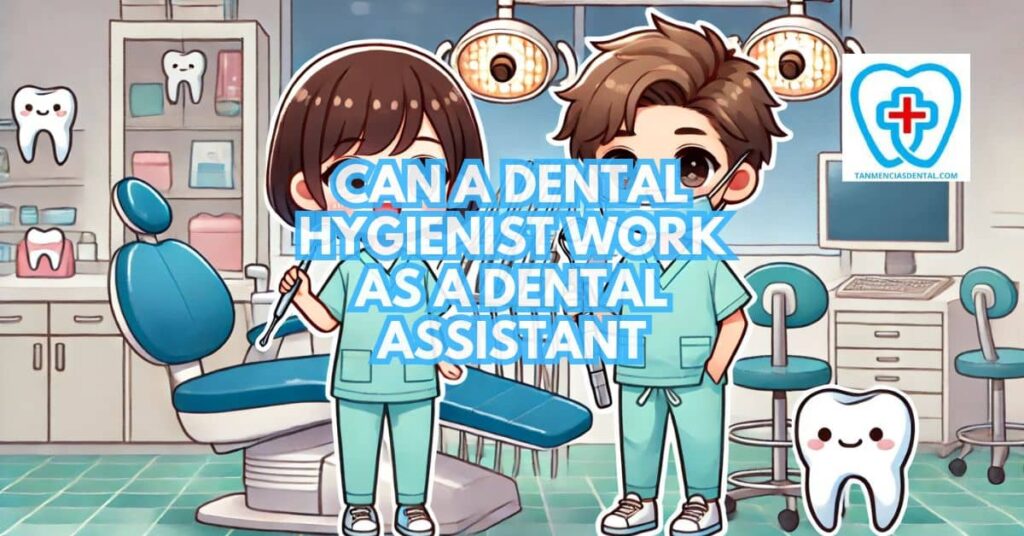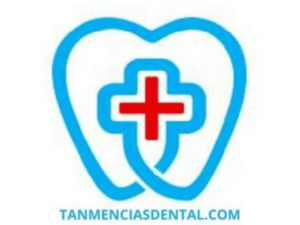Many dental professionals wonder, “Can a dental hygienist work as a dental assistant?”
Both roles are vital in a dental practice, but they have distinct duties and qualifications.
Understanding how the skills of a dental hygienist apply to the role of a dental assistant is important for anyone considering this transition.
While some tasks may overlap, it’s essential to know the specific requirements and regulations for each position.
We’ll explore whether a dental hygienist can successfully work as a dental assistant and what this career shift involves.
1. Understanding the Definitions: Who is a Dental Hygienist, and Who is a Dental Assistant?
A dental hygienist is a licensed oral health professional who typically works independently, focusing on preventive care such as cleanings, scaling, and taking X-rays.
To become a dental hygienist, individuals must complete a dental hygiene program, which usually involves earning an associate degree.
This program includes both classroom instruction and hands-on clinical experience, covering areas like anatomy, periodontology, and radiology.
In contrast, a dental assistant’s role is more supportive, helping dentists during procedures, preparing exam rooms, and sterilizing instruments.
Dental assistants generally require less formal education, often completing a shorter certificate program that does not typically lead to an associate degree.
Understanding the distinct education and responsibilities between the two roles is important when considering a career shift.
This distinction highlights how the training for dental hygienists is more comprehensive, which may affect the feasibility of transitioning into the role of a dental assistant.
🦷 What Is a Dentist Uniform? Essentials of Dental Apparel
2. Navigating the Career Path from Dental Hygienist to Dental Assistant
Transitioning from a dental hygienist to a dental assistant may appeal to those looking for a change in job responsibilities, such as a less physically demanding role or more flexible hours.
To become a dental assistant, individuals typically need to complete a training program that covers essential skills like patient care, sterilization procedures, and assisting during dental treatments.
This training is often shorter and less intensive than the education required for a dental hygienist, and it may not always lead to an associate degree.
However, many dental assistants still choose to complete an accredited program to ensure they meet industry standards.
Dental hygienists making this shift should carefully assess how the duties of a dental assistant differ from their current role, including more focus on supporting dentists and less independent patient care.
Career counseling and networking with professionals in both fields can provide helpful advice on navigating this transition.
Understanding these factors will help guide those exploring the possibility of switching careers.
🦷 Do Braces Cause Gingivitis? Understanding Gum Health
3. Legal and Licensing Considerations in Changing Roles
When a dental hygienist considers transitioning to a dental assistant role, it’s crucial to understand the licensing requirements and legal constraints in their specific region.
Dental hygienists are usually required to hold a professional license, which entails passing a national board examination and completing continuing education, whereas the requirements for dental assistants can be less stringent and vary widely by location.
Some regions require dental assistants to be registered or certified, while others do not.
Before making any career changes, it is imperative for dental hygienists to verify with their local dental boards the necessary qualifications and whether their current license is transferable or if additional certification is needed.
Failure to comply with legal requirements can lead to professional penalties or an inability to practice, underscoring the importance of thorough research and compliance.
🦷 Identifying Broken Tooth Decay Before It Gets Serious
4. Steps to Take for a Dental Hygienist to Become a Certified Dental Assistant
If a dental hygienist decides to transition to a dental assistant, the first step is to thoroughly research the certification requirements in their area.
Many regions require completion of an accredited dental assisting program or passing a certification examination.
It is advisable for hygienists to connect with educational institutions that offer these programs to understand the curriculum and time commitment involved.
Additionally, gaining practical experience by shadowing or working part-time as a dental assistant can provide invaluable insight into the daily responsibilities of the role.
This practical exposure not only enhances employability but also ensures that the transition is well-informed and meets industry standards.
🦷 Why Are Dental Implants So Costly? A Cost Breakdown

5. Financial Implications of the Role Change
Transitioning from a dental hygienist to a dental assistant often results in a decrease in salary, given the different educational and technical demands of the two roles.
Dental hygienists, due to their specialized training and responsibilities, typically earn a higher wage compared to dental assistants.
Before making the switch, it is critical for individuals to assess their financial situation and consider how a potential reduction in income could affect their lifestyle and financial stability.
This financial consideration is crucial in planning for a smooth transition without undue economic strain.
Understanding these implications helps set realistic expectations about the economic impact of changing careers.
🦷 What to Do for a Broken Tooth with Exposed Nerve
6. Job Satisfaction and Fulfillment in Dental Careers
Dental hygienists often report high job satisfaction due to their direct interactions with patients and the ability to provide preventive care.
They find fulfillment in educating patients about oral health and seeing the positive impact of their work on patients’ well-being.
On the other hand, dental assistants enjoy the variety of tasks they perform, from assisting during procedures to managing office duties, which keeps their daily work interesting.
Personal interests play a significant role in job satisfaction; those who thrive on patient care and preventive work may prefer being hygienists, while individuals who enjoy supporting roles and diverse responsibilities might find greater happiness as dental assistants.
Understanding what aspects of the job bring joy and fulfillment can help dental professionals choose the path that best aligns with their strengths and passions.
🦷 Tips for Keeping Teeth Healthy Without Brushing
7. Why Do Dental Hygienists Make More Than Dental Assistants?
The salary disparity between dental hygienists and dental assistants is primarily due to the differences in their training, responsibilities, and the complexity of the tasks they perform.
Dental hygienists are required to complete a more intensive educational program, which often includes a college degree, comprehensive clinical training, and passing a licensing examination.
Their role in providing preventive care and performing procedures that affect patients’ oral health directly commands a higher wage.
In contrast, dental assistants provide more general support in dental practices, which requires less specialized training.
This fundamental difference in roles and responsibilities justifies the variation in compensation between the two positions.
🦷 Dentist vs. Doctor: Who Should You See for Health Issues?
8. Understanding the Differences and Similarities Between Dental Hygienists and Dental Assistants
While dental hygienists and dental assistants both play critical roles in dental care, their responsibilities, training, and patient interactions vary significantly.
Hygienists focus on direct patient care, conducting cleanings, examining for oral diseases, and implementing preventive care plans, whereas assistants primarily provide operational support, managing patient flow, sterilizing instruments, and assisting during procedures.
Despite these differences, both share a common goal of supporting dental health, which requires strong interpersonal skills and a commitment to patient care.
They also work closely together in dental offices, often collaborating to ensure that patient visits are efficient and effective.
Recognizing these similarities and differences is crucial for any hygienist considering a switch to a dental assisting role, as it helps clarify expectations and professional dynamics.
🦷 Is It Too Late to Start Brushing? It’s Never Too Late!
9. The Benefits of Hiring a Dental Hygienist as a Dental Assistant
Hiring a dental hygienist as a dental assistant offers several advantages to a dental practice.
Due to their extensive training in oral health, hygienists have a deeper understanding of dental care processes and patient management, which can enhance the quality of service provided.
Their ability to perform a wider range of tasks with high precision can lead to more efficient operations, especially in busy practices.
Furthermore, their advanced knowledge of oral health could be instrumental in educating patients and assisting dentists with more complex procedures.
This dual capability can make hygienists invaluable as assistants, potentially elevating the overall patient care experience.
🦷 Dentist vs. Orthodontist: Key Differences in Care
10. Adjusting to a New Role: The Practical Changes
A dental hygienist transitioning to a dental assistant must adapt to significant changes in daily responsibilities and workplace dynamics.
While hygienists are accustomed to working independently on specific patient care tasks, dental assistants often assist with a broader range of activities, including administrative duties and direct patient support during procedures.
The shift may require learning new software, handling different types of dental equipment, and enhancing communication skills to interact effectively with both the dental team and patients.
Adjusting to a more supportive role might also involve redefining professional identity and embracing a collaborative approach to dental care.
Successfully navigating these changes is key to thriving in the new role and maintaining job satisfaction.
🦷 Important Facts About Dry Brushing Your Teeth
11. Professional Development and Continuing Education
Continued professional development is crucial, even after transitioning from dental hygienist to dental assistant.
Engaging in ongoing education and training helps in maintaining competencies and staying updated with the latest dental practices and technologies.
This commitment not only enhances job performance but also supports career advancement opportunities within the dental field.
Many educational programs and workshops offer specialized courses tailored for dental assistants, which can help refining skills and expanding knowledge in specific areas of dental care.
Actively pursuing professional development also signals a dedication to excellence and adaptability, qualities that are highly valued in healthcare professions.
🦷 Can You Brush Your Teeth 3 Times a Day? What to Know
👨⚕️ Conclusion
Deciding whether a dental hygienist should work as a dental assistant involves careful consideration of many factors, including personal career goals, financial implications, and professional fulfillment.
It is essential for individuals to thoroughly evaluate their motivations for changing roles and the potential benefits and challenges associated with such a transition.
Understanding the differences between the roles, the legal requirements, and the need for possible retraining provides a solid foundation for making an informed decision.
Ultimately, the choice to switch should align with one’s long-term professional objectives and personal values, ensuring a rewarding and sustainable career path in the dental field.
😊 Self-Promotion
Visit us at Tan-Mencias Dental Clinic, your local source for top-quality dental care in Parang, Marikina City.
Our friendly team is dedicated to providing you with a comfortable and caring environment for all your dental needs.
For any questions or to schedule an appointment, feel free to call us at 9171451074, send us a message through our website’s contact form, or reach out via our Facebook page.
We’re here to assist you with a smile and ensure your visit is as pleasant and efficient as possible.
Choose Tan-Mencias Dental Clinic for your dental health; we’re excited to help you achieve the beautiful and healthy smile you deserve!

